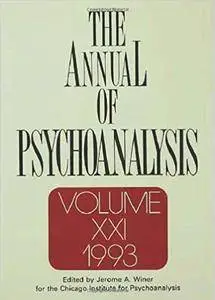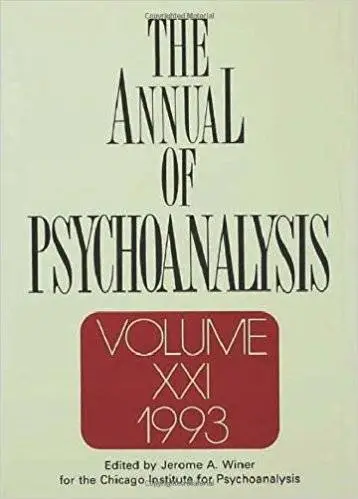Jerome A. Winer, "The Annual of Psychoanalysis, Volume 21"
1993 | ISBN-10: 0881631345 | 336 pages | PDF | 6 MB
1993 | ISBN-10: 0881631345 | 336 pages | PDF | 6 MB
Volume 21 of The Annual of Psychoanalysis is especially welcome for bringing to English-language readers timely contributions from abroad in an opening section on "Psychoanalysis in Europe." The section begins with a translation of Helmut Thomae's substantial critique of the current state of psychoanalytic education; Thomae's proposal for comprehensive reform revolves around a redefinition of the status of the training analysis in analytic training. Diane L'Heureux-Le Beuf's clinical diary of an analysis focusing on the narcissistic elements of oedipal conflict probes the degree to which the analytic method can be applied to "nonstructured" analysands. And Nella Guidi shows the clinical value of supplementing Freud's notion of unobjectionable positive transference with the complementary notion of unobjectionable negative transference.
Section II, on "Psychoanalysis and Hysteria," offers original contributions to Freud scholarship in the form of Jules Glenn's reconsideration of Dora's "Dynamics, Diagnosis, and Treatment"; William McGrath's analysis of the way Freud's hostility to religious superstition gained expression in his early work on hysteria; and Marian Tolpin's self-psychological reprise on the case of Anne O. The section concludes with Elisabeth Young-Bruehl and Sarah Cummin's provocative "What Happened to 'Anorexie Hysterique'?" which questions the contemporary separation of anorexia from hysteria and explore the sociohistorical reasons the separation came about.
Section III, "Clinical and Theoretical Studies," begins with Nancy Kobrin's discussion of Freud's ideas about autonomy, including the terms Freud used and the way Strachey translated them into English. Her goal is to deepen our understanding of how Freud spoke and thought about an individual's sense of self. Frank Summers shows how object relations principles, which are shared by various object relations theories, can inform the conduct of analysis at all levels of pathology, including neurosis. And Henry Smith examines the meaning and value of the "analytic surface," a metaphor that highlights the relationship between the analyst's attention and the patient's attention.
A final section on "Applied Psychoanalysis" offers contemporary examples of applied analytic inquiry in anthropology, art, and literature. Roy Grinker, III and Roy Grinker, Jr., in a methodological contribution to psychoanalytic anthropology, examine what is revealed when a native people (here the Lese of northeastern Zaire in Africa) are asked to retell a story (here the story of Cain and Abel) introduced by them by their Western observers. Danielle Knafo explores the art and life of the Mexican surrealist Frida Kahlo through the concepts of the mirror, the mask, and the masquerade. And David Werman closes the volume with a comparative study of Edgar Allan Poe's and James Ensor's obsession with revenge, and the role it played in Poe's writing and Ensor's etchings, respectively.
Bringing readers the influential reform proposals of Thomae, a rich sampling of recent Freud scholarship, applied contributions traversing three disciplines, and original clinical contributions reflecting American and European sensibilities, Volume 21 of The Annual is true to the spirit of this distinguished series. It testifies to the scope of analytic inquiry, and it exemplifies the yield of such inquiry in the hands of gifted scholars and clinicians.



